 W
WNortheast of San Francisco, California, on 5 August 1950, a United States Air Force Boeing B-29 Superfortress bomber carrying a Mark 4 nuclear bomb crashed shortly after takeoff from Fairfield-Suisun Air Force Base with 20 men on board. Twelve men were killed in the crash, including the commander of the 9th Bombardment Wing, Brigadier General Robert F. Travis, and another seven were killed on the ground when the aircraft exploded. The base was later renamed for Travis.
 W
WThe 1956 B-47 disappearance occurred on 10 March 1956 over the Mediterranean Sea.
 W
WOn 14 February 1950, a Convair B-36, Air Force Serial Number 44-92075 assigned to the 7th Bomb Wing at Carswell Air Force Base, crashed in northern British Columbia on Mount Kologet after jettisoning a Mark 4 nuclear bomb. This was the first such nuclear weapon loss in history. The B-36 had been en route from Eielson Air Force Base near Fairbanks, Alaska to Carswell AFB in Fort Worth, Texas, more than 3,000 miles south-east, on a mission that included a simulated nuclear attack on San Francisco.
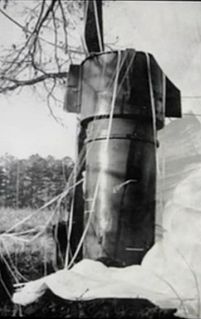 W
WThe 1961 Goldsboro B-52 crash was an accident that occurred near Goldsboro, North Carolina, on 23 January 1961. A Boeing B-52 Stratofortress carrying two 3–4-megaton Mark 39 nuclear bombs broke up in mid-air, dropping its nuclear payload in the process. The pilot in command, Walter Scott Tulloch, ordered the crew to eject at 9,000 feet (2,700 m). Five crewmen successfully ejected or bailed out of the aircraft and landed safely; another ejected, but did not survive the landing, and two died in the crash. Information declassified in 2013 showed that one of the bombs came very close to detonating.
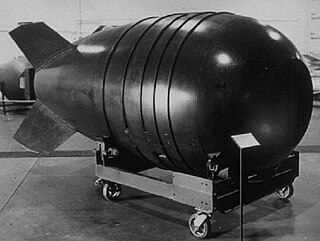 W
WThe 1958 Mars Bluff B-47 nuclear weapon loss incident was an inadvertent nuclear weapon release over Mars Bluff, South Carolina, during 1958. The bomb, which lacked the fissile nuclear core, fell over the area, causing damage to buildings below. Six people were injured by the explosion of the bomb's conventional explosive load. The United States Air Force (USAF) was sued by the family of the victims, who received US$54,000, equivalent to $478,526 in 2019.
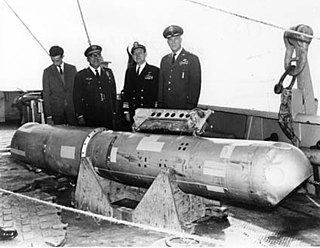 W
WThe 1966 Palomares B-52 crash, or the Palomares incident, occurred on 17 January 1966, when a B-52G bomber of the United States Air Force's Strategic Air Command collided with a KC-135 tanker during mid-air refueling at 31,000 feet (9,450 m) over the Mediterranean Sea, off the coast of Spain. The KC-135 was completely destroyed when its fuel load ignited, killing all four crew members. The B-52G broke apart, killing three of the seven crew members aboard.
 W
WThe 1965 Philippine Sea A-4 crash was a Broken Arrow incident in which a United States Navy Douglas A-4E Skyhawk attack aircraft of Attack Squadron 56 (VA-56) carrying a nuclear weapon fell into the sea off Japan from the aircraft carrier USS Ticonderoga. The aircraft, pilot and weapon were never recovered.
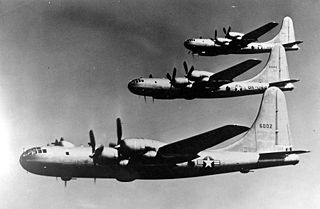 W
WThe 1950 Rivière-du-Loup B-50 nuclear weapon loss incident refers to loss of a nuclear weapon near Rivière-du-Loup, Quebec, Canada, during the fall of 1950. The bomb was released due to engine troubles, and then was destroyed in a non-nuclear detonation before it hit the ground.
 W
WThe 1964 Savage Mountain B-52 crash was a U.S. military nuclear accident in which a Cold War bomber's vertical stabilizer broke off in winter storm turbulence. The two nuclear bombs being ferried were found "relatively intact in the middle of the wreckage", and after Fort Meade's 28th Ordnance Detachment secured them, the bombs were removed two days later to the Cumberland Municipal Airport.
 W
WOn 21 January 1968, an aircraft accident ; Danish: Thuleulykken) involving a United States Air Force (USAF) B-52 bomber occurred near Thule Air Base in the Danish territory of Greenland. The aircraft was carrying four B28FI thermonuclear bombs on a Cold War "Chrome Dome" alert mission over Baffin Bay when a cabin fire forced the crew to abandon the aircraft before they could carry out an emergency landing at Thule Air Base. Six crew members ejected safely, but one who did not have an ejection seat was killed while trying to bail out. The bomber crashed onto sea ice in North Star Bay, Greenland, causing the conventional explosives aboard to detonate and the nuclear payload to rupture and disperse, which resulted in radioactive contamination.
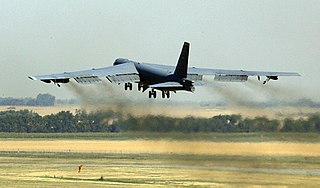 W
WOn 29 August 2007, six AGM-129 ACM cruise missiles, each loaded with a W80-1 variable yield nuclear warhead, were mistakenly loaded onto a United States Air Force (USAF) B-52H heavy bomber at Minot Air Force Base in North Dakota and transported to Barksdale Air Force Base in Louisiana. The nuclear warheads in the missiles were supposed to have been removed before the missiles were taken from their storage bunker. The missiles with the nuclear warheads were not reported missing, and remained mounted to the aircraft at both Minot and Barksdale for 36 hours. During this period, the warheads were not protected by the various mandatory security precautions for nuclear weapons.
 W
WOn 14 March 1961 an aircraft accident occurred near Yuba City, California. A United States Air Force B-52F-70-BW Stratofortress bomber, AF Serial No. 57-0166, c/n 464155, carrying two nuclear weapons departed from Mather Air Force Base near Sacramento. According to the official Air Force report, the aircraft experienced an uncontrolled decompression that required it to descend to 10,000 feet (3,000 m) in order to lower the cabin altitude. Increased fuel consumption caused by having to fly at lower altitude, combined with the inability to rendezvous with a tanker in time caused the aircraft to run out of fuel. The aircrew ejected safely, and then the unmanned aircraft crashed 15 miles (24 km) west of Yuba City, tearing the nuclear weapons from the aircraft on impact. However, in a 2012 book LTC Earl McGill, a retired SAC B-52 pilot, claims that the aircrew, after an inflight refueling session that provided inadequate fuel, refused the offer of an additional, unscheduled inflight refueling, bypassed possible emergency landing fields and ran out of fuel. The crew ejected, the aircraft broke up and four onboard nuclear weapons were released. The weapons' multiple safety interlocks prevented both a nuclear explosion and release of radioactive material. LTC McGill, based on his SAC experience, blames the aircrew failures on the use of dexedrine to overcome tiredness on the 24-hour flight preceding the accident.